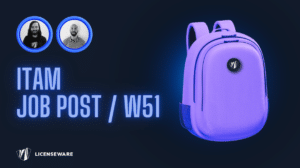Beyond High-Level Numbers: Understanding DOGE’s Software Licensing Scrutiny

In the ongoing quest to trim federal spending, the Department of Government Efficiency (DOGE), led by Elon Musk, has turned its attention to what it considers a prime example of government waste: software licenses. Earlier this year, DOGE made headlines by claiming that federal agencies maintain far more software licenses than they have employees, suggesting rampant inefficiency and mismanagement of taxpayer dollars.
The claims were attention-grabbing: the General Services Administration (GSA) allegedly maintained 37,000 licenses for WinZip despite having only 13,000 employees, while the Department of Labor purportedly held multiple cybersecurity program licenses each covering more than 20,000 users despite a workforce of just 15,000. These discrepancies, according to DOGE, represented millions in potential savings that could be reclaimed through more disciplined procurement practices.
However, as federal technology experts and procurement specialists have pointed out, the reality of government software licensing is considerably more nuanced than these raw numbers suggest. The apparent mismatch between license counts and employee headcounts often reflects legitimate operational requirements, procurement strategies, and the complex realities of managing IT resources across sprawling federal agencies with diverse missions and technical needs.
This article examines the complexities of federal software licensing, the validity of DOGE’s efficiency claims, and the broader implications for government technology procurement. By looking beyond the headline figures, we can better understand the challenges of optimizing software spending while maintaining the technological capabilities necessary for effective government operations.
Why License Numbers Don’t Tell the Full Story
When DOGE announced that the General Services Administration had nearly three times as many WinZip licenses as employees, the implication was clear: government waste had been uncovered. However, software licensing experts and federal IT managers quickly pointed out several legitimate reasons for this apparent discrepancy.
Device-Based vs. User-Based Licensing
As Liz Lezius, spokesperson for Alludo (formerly Corel), the company behind WinZip, explained to Wired, “Licensing for [WinZip] is based on the number of devices on which it is installed, not the number of employees with access to the software.” This fundamental distinction undermines the direct comparison between license counts and employee headcounts.
In modern federal agencies, employees often use multiple devices—desktop computers, laptops, tablets, and testing environments, each requiring its own license for installed software. “It is typical that there are more devices than employees in an organization,” Lezius noted, highlighting a reality that applies across both public and private sectors.
Contractor and External User Access
Federal agencies frequently provide software access to contractors, temporary workers, and external partners who collaborate on government projects but aren’t counted in official employee tallies. These additional users require legitimate licenses but aren’t reflected in the employee numbers DOGE used as its baseline for comparison.
A former federal official who worked on technology licensing across multiple presidential administrations told Wired that agencies may also purchase software licenses on behalf of their contractors, often because government-negotiated rates provide better value than what contractors could secure independently. “It’s a very clear way for agencies to manage costs,” the official explained.
Procurement Strategies and Budgeting Realities
Government agencies often employ strategic procurement approaches that can result in higher license counts than might seem immediately necessary. Long-term contracts that lock in favorable rates may include projected staffing increases, creating a temporary surplus of licenses that will be utilized as the workforce expands.
“It’s cheaper to buy them all at once than go back and add on 500 at a time,” the former federal official told Wired, describing a common practice designed to maximize budget efficiency over multi-year periods. These procurement strategies reflect the complex budgeting realities of federal agencies, where funding certainty can fluctuate with changing administrations and priorities.
Bundle Requirements and Technical Necessities
In some cases, software vendors require agencies to purchase bundles of tools to access specific functionality they need. Ryan Triplette, executive director of the Coalition for Fair Software Licensing, explained to Wired that suppliers may mandate the purchase of entire software suites even when agencies only require particular components, resulting in license counts that appear inflated when viewed in isolation.
Additionally, technical requirements often necessitate multiple installations of the same software across development, testing, and production environments, a standard practice in IT operations that naturally increases license counts without indicating waste or inefficiency.
DOGE’s Claims and Verification Challenges
DOGE’s scrutiny of federal software licenses is part of a broader effort to identify and eliminate government waste. However, independent analysis of the department’s claims reveals significant questions about both the methodology and the magnitude of the purported savings.
The Scale of DOGE’s Claims
On its website, DOGE has published a running total of estimated savings, which stood at $160 billion as of April 20, 2025, according to BBC Verify’s analysis. The department claims to have identified and eliminated numerous instances of wasteful spending, including what it characterizes as excessive software licensing.
In a post on X (formerly Twitter), DOGE announced that the GSA had “deleted 114,163 unused software licenses & 15 underutilized/redundant software products, for a total annual savings of $9.6M.” Similar claims were made about the Department of Labor, where DOGE alleged finding five cybersecurity programs each licensed for more than 20,000 users despite the department having only 15,000 employees.
Evidence and Verification Issues
BBC Verify’s investigation into DOGE’s claimed savings found that less than 40% of the total figure is broken down into individual savings, and only about half of these itemized savings had links to supporting documentation. This lack of transparency makes independent verification challenging.
The BBC analysis also identified potential accounting errors, including DOGE mistakenly claiming to have saved $8 billion from canceling an immigration contract that actually had a total value of $8 million, a thousand-fold discrepancy that raises questions about the rigor of DOGE’s review process.
David Drabkin, a federal contracts expert who helped develop the Federal Procurement Data System (FPDS), cautioned that the maximum figures listed in government contracts should be treated with care. “FPDS does not reflect the actual paid price until some period of time after the contract has been completed and the contract actions have been recorded,” he told the BBC, explaining that contract values often represent upper limits rather than actual expenditures.
Contradictory Statements and Factual Discrepancies
NextGov reported that DOGE representatives have made statements that were later contradicted by the agencies they were working with. For example, DOGE engineer Aram Moghaddassi claimed that 40% of phone calls to the Social Security Administration to change direct deposit information come from fraudsters, a statement the SSA itself refuted, clarifying that 40% of direct deposit fraud is associated with phone calls, not that 40% of all such calls are fraudulent.
These discrepancies suggest that DOGE’s approach to identifying waste may sometimes rely on incomplete information or misinterpretations of agency data, potentially undermining the credibility of its efficiency claims.
The Broader Context: Federal IT Procurement Challenges
While DOGE’s focus on software licenses has drawn attention to potential inefficiencies, the challenges of federal IT procurement extend far beyond license counts. Understanding these broader issues provides essential context for evaluating efficiency initiatives and their potential impact.
Legacy Systems and Modernization Hurdles
Federal agencies often struggle with aging technology infrastructure that complicates licensing and procurement decisions. As Elon Musk noted in his Fox News interview reported by NextGov, “The IRS, for example, has been trying to get off its 1960s-era system for individual tax account administration for years.”
These legacy systems frequently require specialized software that may not align with modern licensing models, creating situations where agencies maintain multiple tools with overlapping functionality during extended transition periods. What might appear as redundant licensing often represents the complex reality of maintaining operational continuity while pursuing modernization.
Balancing Efficiency and Effectiveness
The pursuit of cost savings must be balanced against the need for effective government operations. Donald Moynihan, a public policy professor at the University of Michigan, cautioned in NextGov that “The exclusive focus on fraud is undermining customer service. DOGE is using fraud as a justification for cutting employees, which is mechanically worsening service.”
This tension between efficiency and effectiveness is particularly evident in software procurement, where cutting licenses without understanding their operational purpose can inadvertently impact service delivery or create security vulnerabilities. At the State Department, for example, staffing and funding shortages were identified by the Government Accountability Office as the top threats to passport processing modernization efforts.
Legislative Reform Efforts
Congressional efforts to address software procurement challenges predated DOGE’s creation. The Strengthening Agency Management and Oversight of Software Assets Act (SAMOSA Act), which passed the House with bipartisan support but stalled in the Senate, would have established systematic processes for agencies to assess existing software contracts, consolidate licenses where appropriate, and negotiate better terms.
A former federal official told Wired that “If Elon [Musk] wanted to do this the right way, they would work with Congress to pass the SAMOSA Act,” arguing that sustainable reform requires “setting a repeatable process whereby agencies will constantly reevaluate their software needs and get better performance for lower costs.”
Strategic Priorities and Resource Allocation
Federal contracting experts have suggested that DOGE’s focus on individual software licenses may distract from larger opportunities for efficiency. According to Wired’s analysis of data from Deltek’s GovWin IQ tool, there were 11 federal IT contracting programs that each accounted for over $1 billion in spending during the last fiscal year.
These major contracts, including a Dell deal with the Department of Veterans Affairs and a Booz Allen Hamilton agreement with the Pentagon, represent more significant potential for cost optimization than the relatively modest savings identified through license reductions. This raises questions about whether DOGE’s approach targets the most impactful areas for efficiency improvements.
Lessons and Recommendations for Effective Software Management
The scrutiny of federal software licensing by DOGE highlights important considerations for both government agencies and the broader technology community. Drawing from expert insights and historical context, several key lessons and recommendations emerge for more effective software asset management.
Transparency and Accurate Metrics
One clear lesson from DOGE’s software license review is the need for transparent, accurate metrics that reflect the complexity of modern IT environments. Simple comparisons between license counts and employee numbers fail to capture the nuanced realities of how software is deployed and utilized across organizations.
Ryan Triplette of the Coalition for Fair Software Licensing told Wired that despite concerns about DOGE’s approach, “this is one area that there is hope and possibility.” Improved visibility into software assets could indeed benefit agencies, but only if the analysis acknowledges the legitimate operational reasons for apparent discrepancies.
Strategic License Management
Federal agencies would benefit from more strategic approaches to license management that balance cost efficiency with operational needs. This includes:
- Regular auditing of software usage to identify truly unused licenses
- Negotiating flexible licensing terms that accommodate fluctuating workforce needs
- Standardizing software tools across departments where appropriate
- Developing clear policies for contractor access to government-licensed software
These practices align with the goals of the SAMOSA Act, which aimed to give agencies more bargaining power over the handful of large tech firms that dominate government software contracting.
Holistic Efficiency Approaches
The focus on individual software licenses represents just one small aspect of potential government efficiency improvements. A more holistic approach would consider:
- Modernizing legacy systems that drive inefficient software procurement
- Addressing the root causes of duplicate systems across agencies
- Balancing cost-cutting with service delivery requirements
- Prioritizing high-value contracts for optimization
As noted in NextGov’s reporting, Musk himself acknowledged the importance of fixing government computer systems to ensure citizens receive benefits and services efficiently. “If the computers can’t talk to each other, you can’t get research done. If the computers can’t stay online, people won’t receive their Social Security,” he said.
Collaborative Reform Efforts
Sustainable improvements in government software procurement will likely require collaboration between efficiency-focused initiatives like DOGE and established oversight bodies like the Government Accountability Office (GAO).
The BBC reported that after a slow start, GAO Comptroller General Gene Dodaro said DOGE is “actually using our recommendations,” suggesting potential for alignment between DOGE’s rapid-response approach and the more methodical work of permanent government watchdogs.
This collaborative approach could help ensure that efficiency efforts target the most impactful areas while maintaining the operational capabilities necessary for effective government service delivery.
DOGE’s scrutiny of federal software licenses has undoubtedly brought attention to an important aspect of government spending. However, the complexity of federal IT procurement requires nuanced analysis that goes beyond simple comparisons of license counts and employee numbers.
While there are likely legitimate opportunities to optimize software licensing across federal agencies, sustainable efficiency improvements will require approaches that acknowledge the operational realities of modern government IT environments, prioritize high-value targets for cost reduction, and balance efficiency with service delivery requirements.
As federal agencies continue to navigate the challenges of technology modernization and budget constraints, the lessons from DOGE’s software license review could contribute to more effective management practices—but only if they’re applied with an understanding of the legitimate operational needs that drive software procurement decisions.
The path to truly efficient government technology spending lies not in headline-grabbing comparisons, but in systematic, sustainable reforms that enhance both fiscal responsibility and operational effectiveness. By focusing on this balanced approach, federal agencies can optimize their software investments while maintaining the technological capabilities necessary to fulfill their diverse and critical missions.










